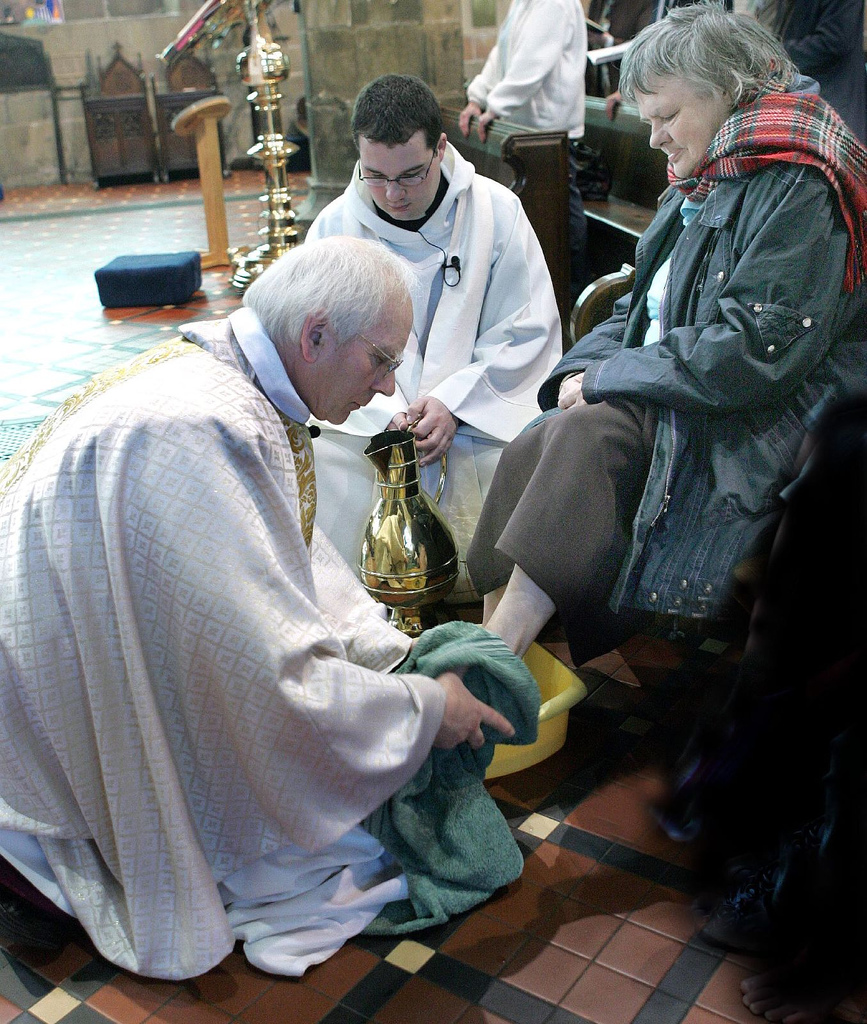|
Alle Menschen Höret Auf Dies Neue Lied
"" (All people, listen to this new song) is a Christian offertory hymn with German text, translated in 1972 by Sigisbert Kraft from a 1966 Dutch hymn by Simon Jelsma with a melody by Wim ter Burg. It appeared from 1975 in German hymnals and song books. History was a priest and later bishop of the Catholic Diocese of the Old Catholics in Germany, Old Catholics in Germany. He translated in 1972 a Dutch song that had written in 1966. The Dutch song came with a melody written by . The hymn was included in regional sections of the first common German Catholic hymnal Gotteslob (1975), ''Gotteslob'' of 1975, such as GL 928 in the Diocese of Limburg, and its Gotteslob, 2013 edition, such as GL 717 in the Diocese of St. Pölten and GL 730 in Limburg. It is also part of other songbooks, including ecumenical collections and books for children and young people. Text, theme and melody The text, in five stanzas of eight short lines each, addresses all people, first to listen. In the secon ... [...More Info...] [...Related Items...] OR: [Wikipedia] [Google] [Baidu] |
Hymn
A hymn is a type of song, and partially synonymous with devotional song, specifically written for the purpose of adoration or prayer, and typically addressed to a deity or deities, or to a prominent figure or personification. The word ''hymn'' derives from Greek language, Greek (''hymnos''), which means "a song of praise". A writer of hymns is known as a hymnist. The singing or composition of hymns is called hymnody. Collections of hymns are known as hymnals or hymn books. Hymns may or may not include instrumental accompaniment. Polyhymnia is the Greco/Roman goddess of hymns. Although most familiar to speakers of English in the context of Christianity, hymns are also a fixture of other major religious groups, world religions, especially on the Indian subcontinent (''stotras''). Hymns also survive from antiquity, especially from Egyptian and Greek cultures. Some of the oldest surviving examples of notated music are hymns with Greek texts. Origins Ancient Eastern hymns include th ... [...More Info...] [...Related Items...] OR: [Wikipedia] [Google] [Baidu] |
Offertory Hymn
The offertory (from Medieval Latin ''offertorium'' and Late Latin ''offerre'') is the part of a Eucharistic service when the bread and wine for use in the service are ceremonially placed on the altar. A collection of alms (offerings) from the congregation, which may take place also at non-Eucharistic services, often coincides with this ceremony. The Eucharistic theology may vary among those Christian denominations that have a liturgical offertory. In the Roman Rite, the term "Preparation of the Gifts" is used in addition to the term "Offertory" (both capitalized) or, rather, the term "Preparation of the Gifts" is used for the action of the priest, while the term "Offertory" is used for the section of the Mass at which this action is performed in particular when speaking of the accompanying chant. In the Lutheran Mass, the Offertory includes the presentation of the eucharistic gifts at the altar by the churchwardens, the bringing up of the collection to the altar, and the prayer ... [...More Info...] [...Related Items...] OR: [Wikipedia] [Google] [Baidu] |
Gotteslob (1975)
The 1975 edition of ''Gotteslob'' (''God's Praise'') was the first combined Prayer book, prayerbook and Hymnal, hymnbook authorised by the bishops of all German-speaking Roman Catholics in Germany and Austria. It contains texts and songs for liturgy, communal prayer and private prayer, divided into a section which is common for all, and an appendix for the local songs in a Diocese (Catholicism), diocese. Forerunners for a common hymnal were the hymnal ''Cantate!'', published by Heinrich Bone in 1847 and used by multiple diocese of German-speaking countries, and ''Kirchenlied'', a 1938 hymnal that included songs by Protestant hymnwriters. Maria Luise Thurmair was a member of the commission preparing the edition, and also contributed several songs to the book. Her "Den Herren will ich loben", based on the Magnificat and many other liturgical hymns appeared there first. Friedrich Dörr was a member of the commission who contributed mostly his translations of Latin hymns, such as " ... [...More Info...] [...Related Items...] OR: [Wikipedia] [Google] [Baidu] |
Diocese Of Limburg
The Diocese of Limburg () is a Latin Church diocese of the Catholic Church in Germany. It belongs to the ecclesiastical province of Cologne, with metropolitan see being the Archdiocese of Cologne. Its territory encompasses parts of the States of Hesse and Rhineland-Palatinate. Its cathedral church is St George's Cathedral Limburg an der Lahn. The diocese's largest church is Frankfurt Cathedral, St. Bartholomew. From October 2013, the administrator of the diocese during the suspension of Bishop Franz-Peter Tebartz-van Elst is Wolfgang Rösch. The Bishop later resigned. The Cathedral Chapter elected and on 1 July 2016, Pope Francis appointed the Vicar General of the Roman Catholic Diocese of Trier, Germany, Georg Bätzing, to serve as the next Bishop of the Diocese of Limburg, succeeding Bishop Tebartz-van Elst. He was consecrated by the Archbishop of Cologne, Cardinal Rainer Woelki, on 18 September 2016. At the end of 2008 the diocese had 2,386,000 inhabitants. About 28 per ... [...More Info...] [...Related Items...] OR: [Wikipedia] [Google] [Baidu] |
Gotteslob
''Gotteslob'' ("Praise of God") is the title of the hymnbook authorized by the Catholic dioceses in Germany, Austria, South Tyrol, Luxembourg and Liège, Belgium. First published in Advent 2013, it is the current official hymnal for German-speaking Catholics, succeeding the first common German hymnal, the 1975 edition of the same name. Each diocese published a book containing a common section and a regional section. The first editions amounted to around 4 million copies. History ''Gotteslob'' was developed as a sequel of the first common German hymnal, ''Gotteslob'' of 1975. It was developed over a period of 10 years by around 100 experts, who studied the use of hymns, conducting surveys and running tests in selected congregations. ''Gotteslob'' was published by Catholic dioceses in Germany, Austria, South Tyrol, and is also used by German-speaking parishes in Luxembourg and the Diocese of Liège, Belgium. It was introduced from Advent 2013, beginning on 1 December. It i ... [...More Info...] [...Related Items...] OR: [Wikipedia] [Google] [Baidu] |
Diocese Of St
In church governance, a diocese or bishopric is the ecclesiastical district under the jurisdiction of a bishop. History In the later organization of the Roman Empire, the increasingly subdivided provinces were administratively associated in a larger unit, the diocese (Latin ''dioecesis'', from the Greek term διοίκησις, meaning "administration"). Christianity was given legal status in 313 with the Edict of Milan. Churches began to organize themselves into dioceses based on the civil dioceses, not on the larger regional imperial districts. These dioceses were often smaller than the provinces. Christianity was declared the Empire's official religion by Theodosius I in 380. Constantine I in 318 gave litigants the right to have court cases transferred from the civil courts to the bishops. This situation must have hardly survived Julian, 361–363. Episcopal courts are not heard of again in the East until 398 and in the West in 408. The quality of these courts was lo ... [...More Info...] [...Related Items...] OR: [Wikipedia] [Google] [Baidu] |
Maundy Thursday
Maundy Thursday, also referred to as Holy Thursday, or Thursday of the Lord's Supper, among other names,The day is also known as Great and Holy Thursday, Holy and Great Thursday, Covenant Thursday, Sheer Thursday, and Thursday of Mysteries. is a Christian feast during Holy Week that marks the beginning of the Paschal Triduum, and commemorates the Washing of the Feet (Maundy) and Last Supper of Jesus Christ with the Apostles, as described in the canonical gospels. It is the fifth day of Holy Week, preceded by Holy Wednesday (Spy Wednesday) and followed by Good Friday. "Maundy" comes from the Latin word , or commandment, reflecting Jesus' words "I give you a new commandment." The date of the day will vary according to whether the Gregorian calendar or the Julian calendar is used. Eastern churches generally use the Julian system. Names Use of the names "Maundy Thursday", "Holy Thursday", and others is not evenly distributed. The generally accepted name for the day varies ... [...More Info...] [...Related Items...] OR: [Wikipedia] [Google] [Baidu] |
Corpus Christi (festival)
The Feast of Corpus Christi (), also known as the Solemnity of the Most Holy Body and Blood of Christ, is a liturgical solemnity celebrating the real presence of Christ in the Eucharist; the feast is observed by the Latin Church, in addition to certain Western Orthodox, Lutheran, and Anglican churches. Two months earlier, the institution of the Eucharist at the Last Supper is observed on Maundy Thursday in a sombre atmosphere leading to Good Friday. The liturgy on that day also commemorates Christ's washing of the disciples' feet, the institution of the priesthood, and the agony in the Garden of Gethsemane. The feast of Corpus Christi was proposed by Thomas Aquinas, Doctor of the Church, to Pope Urban IV, in order to create a feast focused solely on the Holy Eucharist, emphasizing the joy of the Eucharist being the Body and Blood, Soul and Divinity of Jesus Christ. Having recognized in 1264 the authenticity of the Eucharistic Miracle of Bolsena, on input of Aquinas, the pontiff ... [...More Info...] [...Related Items...] OR: [Wikipedia] [Google] [Baidu] |
First Communion
First Communion is a ceremony in some Christian traditions during which a person of the church first receives the Eucharist. It is most common in many parts of the Latin tradition of the Catholic Church, Lutheran Church and Anglican Communion (other ecclesiastical provinces of these denominations administer a congregant's First Communion after they receive baptism and confirmation). In churches that celebrate a rite of First Communion separate from baptism or confirmation, it typically occurs between the ages of seven and thirteen, often acting as a rite of passage. In other denominations first communion ordinarily follows the reception of confirmation, which occurs at some point in adolescence or adulthood, while Eastern Orthodox and Oriental Orthodox Christians first receive the sacrament of Holy Communion in infancy, along with Holy Baptism and Chrismation. Characteristics Catholics believe this event to be very important, as the Eucharist occupies a central role in Catholi ... [...More Info...] [...Related Items...] OR: [Wikipedia] [Google] [Baidu] |
Confirmation In The Catholic Church
Confirmation in the Catholic Church is one of the seven Sacraments (Catholic Church), sacraments. It is also one of the three sacraments of initiation into the Catholic Church, the other two being Baptism and First Communion. Description The Catechism of the Catholic Church states: It is evident from its celebration that the effect of the sacrament of Confirmation is the special outpouring of the Holy Spirit as once granted to the apostles on the day of Pentecost ... Recall then that you have received the spiritual seal, the spirit of wisdom and understanding, the spirit of right judgment and courage, the spirit of knowledge and reverence, the spirit of holy fear in God's presence. Guard what you have received. God the Father has marked you with his sign; Christ the Lord has confirmed you and has placed his pledge, the Spirit, in your hearts. The Catechism of the Catholic Church sees the account in the Acts of the Apostles as a scriptural basis for Confirmation as a sacrament ... [...More Info...] [...Related Items...] OR: [Wikipedia] [Google] [Baidu] |
Diocese Of Trier
The Diocese of Trier (), in English historically also known as ''Treves'' () from French ''Trèves'', is a Latin Church ecclesiastical territory or diocese of the Catholic church in Germany."Diocese of Trier" '' Catholic-Hierarchy.org''. David M. Cheney. Retrieved February 29, 2016"Diocese of Trier" ''GCatholic.org''. Gabriel Chow. Retrieved February 29, 2016 When it was the archbishopric and , it was ... [...More Info...] [...Related Items...] OR: [Wikipedia] [Google] [Baidu] |








